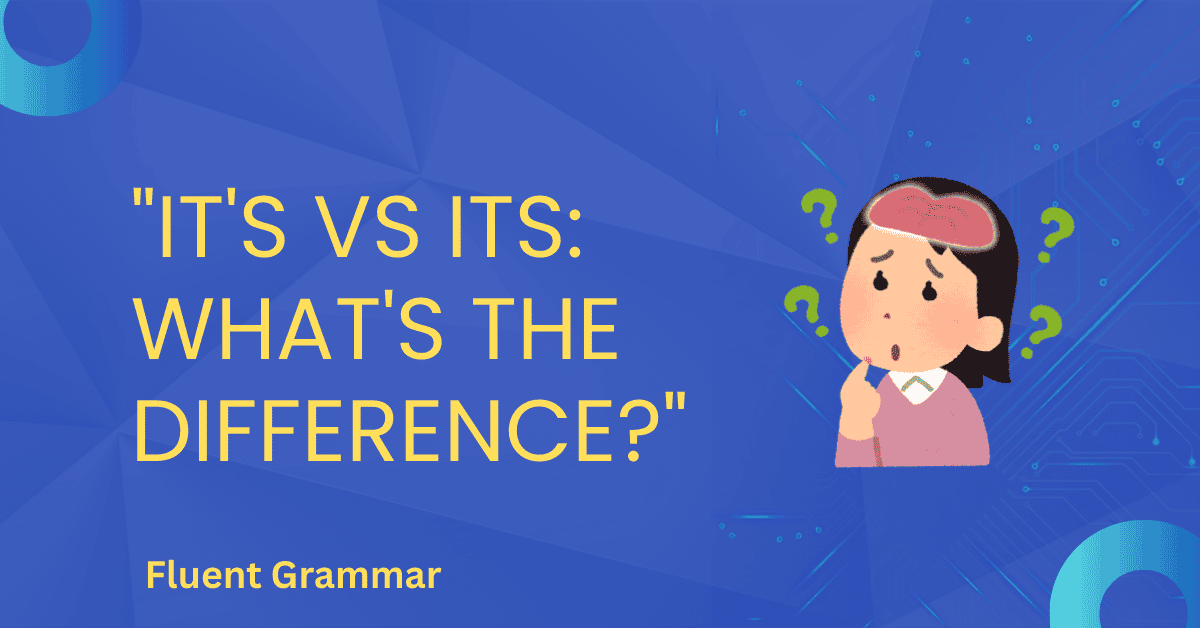Have you ever been left scratching your head on the “its vs it’s” dilemma? If yes, you’re not alone! Even the most experienced writers sometimes stumble over these small words. A bit of relaxation?
Once you understand the basic difference between “its” and “it’s”, you will never be in the same situation again.
In this post, I’ll explain it clearly with examples and easy tips — so you can master it once and for all!
Table of Contents

Its vs It’s: What’s the Difference?
“Its” — Possessive Form (Shows Ownership)
“Its” (without an apostrophe) is a possessive pronoun. The way “his” and “her” are used for a boy or a girl, “its” is used for nouns having undefined gender e.g. animals or inanimate objects.
It shows that something owns something else.
Example1:
❌ Wrong: The committee elected it’s chairperson unanimously.
✅ Right: The committee elected its chairperson unanimously.
Example2:
❌ Wrong: The organization is known for it’s work ethic.
✅ Right: The organization is known for its work ethic.
Example3:
❌ Wrong: The dog ran towards me wagging it’s tail.
✅ Right: The dog ran towards me wagging its tail.
In the above examples, the chairperson, the work ethics, and the tail belong to the committee, the company, and the dog respectively. That’s why “its” is the correct choice in all the cases.
Tip to Remember:
Use “its” wherever it can be replaced with “his” or “her”.
“It’s” — Contraction for “It is” or “It has”
“It’s” (with an apostrophe) is a contraction.
It means “it is” or “it has”, similar to “there’s” (there is) and “she can’t” (she cannot).
Examples:
- It’s quite hot today. (It is quite hot today.)
- It’s been a long time since we last played golf together. (It has been a long time since we last played golf together.)
- It’s the need of the hour to take precautionary measures to prevent the spread of illness. (It is the need of the hour to take precautionary measures to prevent the spread of illness.)
Tip to Remember:
If you can expand “it’s” into “it is” or “it has” and the sentence still makes sense, you’re using it correctly!
For even more examples of how to use “its” and “it’s” correctly, check out this in-depth guide from Grammarly.
Common Mistakes with “Its vs It’s”
Mistake 1: Thinking the Apostrophe Always Means Possession
It’s quite common to assume an apostrophe always means ownership (like “the girl’s book”).
But not in this case!
“Its” (without an apostrophe) shows possession; “it’s” (with an apostrophe) only means “it is” or “it has.”
Mistake 2: Overthinking Short Sentences
Short sentences can be tricky.
Example:
- The company updated it’s policy. ❌ (Wrong)
- The company updated its policy. ✅ (Correct)
Mistake 3: Not Double-Checking Small Words
Since “its” and “it’s” look so similar, it’s easy to miss them while proofreading. Take a few extra seconds to check these little words before you publish anything important!
Quick Checklist: Its vs It’s
✅ If you mean “it is” or “it has” → use “it’s” (with an apostrophe).
✅ If you mean belonging to it → use “its” (no apostrophe).
✅ Always double-check short sentences where mistakes hide easily!
FAQs for “Its vs It’s”:
Q: What is the difference between “its” and “it’s”?
A: “Its” is a possessive pronoun, while “it’s” is a contraction for “it is” or “it has”.
Q: How can I remember when to use “its” or “it’s”?
A: If you can replace the word with “it is” or “it has”, use “it’s”. Otherwise, use “its”.
Conclusion
Confusing “its” and “it’s” is one of the most common and easily fixable grammar mistakes, just like your vs you’re. With a little practice and attention, you’ll be able to spot the difference instantly.
Just remember: if you can replace it with “it is” or “it has,” you need the apostrophe.
Otherwise, keep it clean and apostrophe-free!
✨ Which one have you caught yourself mixing up before — “its” or “it’s”? Tell me in the comments below!
And don’t forget to check out my upcoming posts for more simple grammar fixes!

